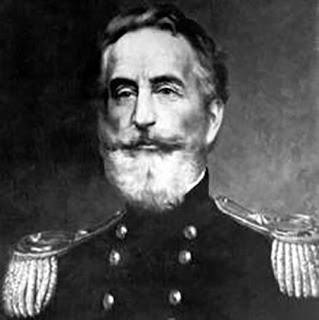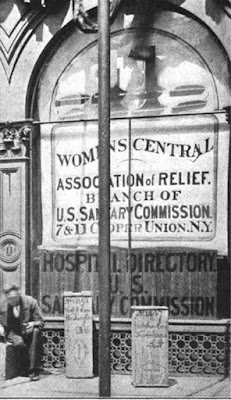Library of Congress
Sanitary Commission in the field, 1863, Alexandria, Virginia
Brady Studios Photograph
Men who administered the Sanitary Commission during the Civil War:
William Van Buren, George Templeton Strong, President Henry Whitney Bellows,
Cornelius R. Agnew & Oliver Wolcott Gibbs
Brady Studios photo of the White House in 1861
When civic-minded New Yorkers attorney George T. Strong, his father-in-law Samuel Ruggles and Unitarian minister Henry Whitney Bellows visited Washington to confer with the War Department's Medical Branch they were so dismayed by hospital conditions and the logjam of bureaucracy in the Union Army they decided to act on their own.
"The old Medical Bureau was, by the universal consent of all but its own members, the most narrow, hidebound, fossilized, red-tape-y of all the departments in Washington. It was without influence or weight...Lincoln actually did not know who the Surgeon-General was." George Templeton Strong
Surgeon General Dr. Clement Alexander Finley (1797-1879)
His term of office was less than a year. The Sanitary Commission convinced
Lincoln to give them a say in his replacement.
William Hammond replaced Finley in 1862.
During the war almost 300 local aid societies operated under the Commission, raising five million dollars in cash donations and the equivalent of fifteen million in supplies including clothing, food and bedding. They organized supply depots, railroad and ship transportation for patients and supplies and staffed dozens of hospitals, all run by the men's standing committee in New York who met daily.
Sanitary Commission warehouse at 244 F Street
in Washington
A quilt at New York City's Metropolitan Fair












No comments:
Post a Comment